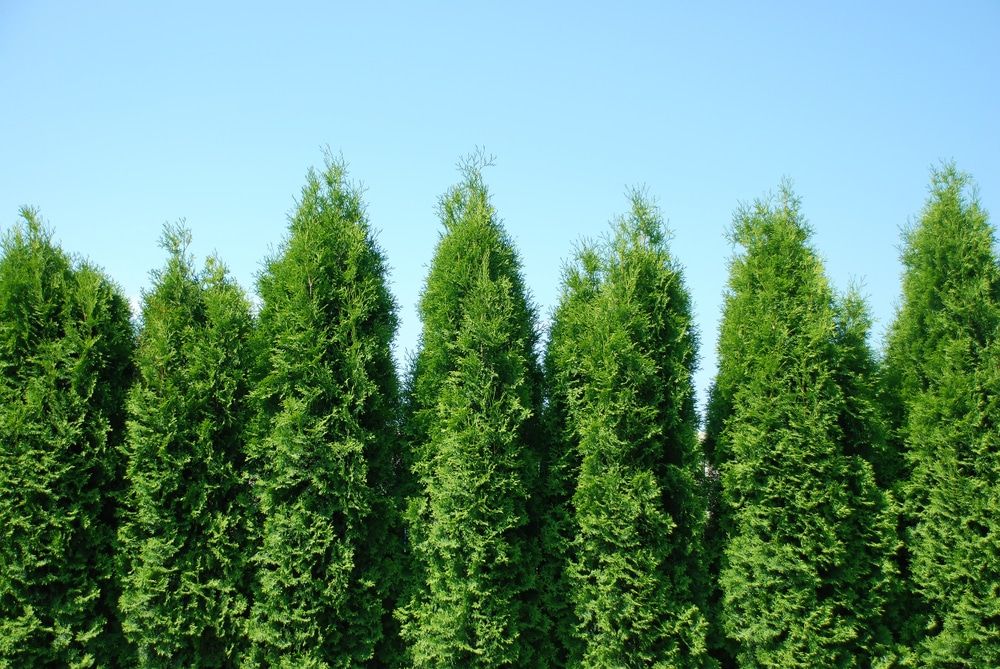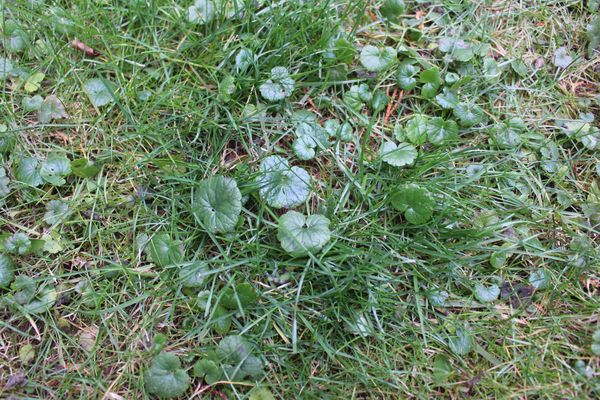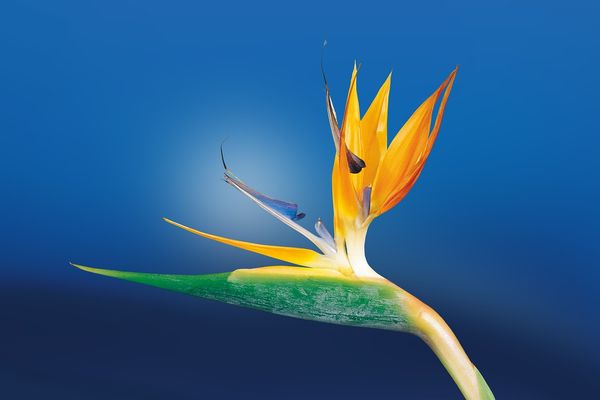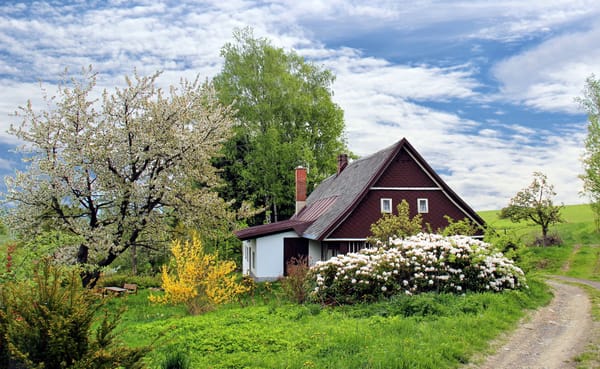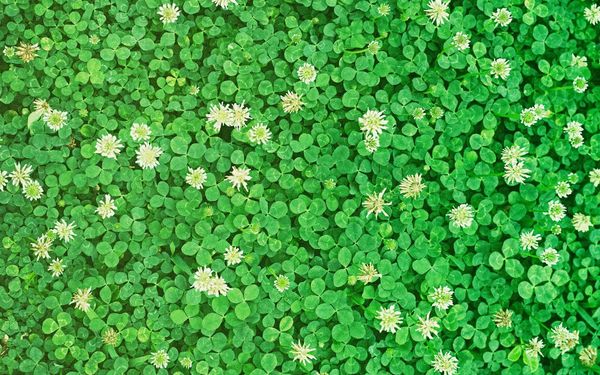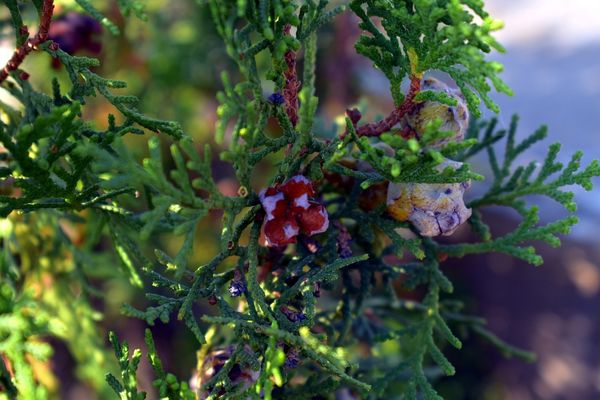The green giant arborvitae, also known as Thuja Green Giant, is a vibrant evergreen tree that enhances the wonder and beauty of various landscape setups. However, because of how rapidly these trees grow, knowing how to space them and allow growth is essential. If you don't, there's a chance that evergreens may spread out and suffocate the roots of other plants.
This article discusses large green arborvitae growth and spacing. In addition, get a close-up look at upkeep and professional advice on caring for these magnificent giants.
Thuja Green Giant Size
According to the Arbor Day Foundation, the Thuja is one of the tallest evergreen trees, reaching 50 to 60 feet tall when fully grown. Some publications claim they may even reach astonishing heights of 75 feet and widths of 25 feet.
However, the green giant's annual growth rate is considerably more distinctive. The tree typically grows 2 to 3 feet yearly but may increase as much as 5 feet in certain situations.
Space green giant arborvitae might be challenging due to the evergreen's rapid growth and high maximum height. Before planting, nevertheless, it's also essential to consider other facets of the size of the green monster.
Tree Width
When fully grown, these trees have an average spread of 12 to 15 feet, which is very broad compared to other evergreens. The tree's conical form is recognizable and protective due to the relationship between its height and breadth. If you want to use the green giant on your land as a hedge or a screen, it's crucial to comprehend how it spreads.
Root System
Regarding different kinds of soil, the arborvitae is a thorny tree. It does not thrive well in rainy, swampy, or saline environments, although it can endure finely ground and rocky soils. So that the earth is well watered, it is essential to grow the green giant in locations with excellent drainage and minimal clay.
Thuja roots are delicate and fibrous, yet they have a long reach and often approach the tree's drip line (or outermost circle). To prevent crowding, a green giant evergreen requires twice as much space for its roots as for its breadth. Otherwise, invasive plant roots may prevent the tree from getting adequate water.
The mature arborvitae requires between 18 and 24 inches of soil for its roots to spread downward. If the tree is planted in too-thin soil, it may anchor and develop health problems, such as waterlogging.
Spacing For Planting
The Thuja looks gorgeous, used alone or with other trees in various landscape configurations. Combined with other specimens, it forms more intricate shapes,, but stands out boldly as a brilliant accent when used alone. However, sufficient care should be taken while spacing them to prevent root choking and tree damage.
Let's examine various gigantic green arborvitae spacing illustrations and some details about them.
Spacing For Hedges
Due to its breadth and growth pace, the Thuja green giant is often listed as the best tree for hedging. A series of Thuja hedges may be spaced in various ways depending on the intended result.
The bottom of the hedges will be narrower than the top if the trees are planted too closely together. Since the top will be cut and shaved, a wall should have trees that thicken toward the bottom. Thuja green giants need to be spaced at least 5 feet apart for the optimum thickness when planted in rows.
A well-shaped formal hedge may be made by planting them in rows that are 5 feet apart. You may choose a different planting pattern for a thicker, deeper border. As shown on the planting plan below, I advise planting each tree with an 8-foot space between them in two alternating rows with a 4-foot space between them.
The space you give each tree will determine its size, but this will come at the price of your hedge's density, which will diminish with excessive spacing and may lead to gaps between each tree's leaves. In this situation, alternate planting excels and provides the best of both worlds.
Placing the arborvitae thus close together will provide a dense screen while maintaining the trees' space, as screen trees are often untrimmed. Plan for the desired appearance since your screen or hedge will grow even thicker after trimming.
Planting From Buildings
Planting the Thuja green giant too close to a house, a power line, or any other structure might cause serious damage. Over time, mature roots or branches might cause structural damage to buildings and structures because of the tree's quick growth rate and maximum size.
When planting a tree as a specimen, give it at least 15 feet of space from other plants and structures.
How To Plant Arborvitae
Plan an area that will accommodate a green giant's size requirements before planting it. The width and height of the tree should fit in the space. There should be minimal clay in the soil, sufficient drainage, and room for the roots of a mature tree to spread out. The location needs to be far from any water sources or soggy regions.
The space must also provide the sunshine the tree need. The Thuja green giant should grow in regions with full sun and some shade, where it may get more than four hours every day of direct sunshine.
After purchasing an arborvitae seedling, please remove it from the container and carefully brush off any extra soil to reveal the root ball. For the tree, you should dig a hole around 1 inch deeper and three times broader than the size of the root ball. This is because arborvitae roots often extend more horizontally than downward.
If you excavate the right-sized hole, the sapling will fit approximately as tall as it did in the container. Fill the gap around the sapling over a few rounds, then press down hard with your foot. The tree will eventually be buried and firmly fixed in the ground.
Once the tree has been planted in its new hole, top the area off with mulch to prevent weed development, assist the soil in retaining moisture, and supply nitrogen.
Regularly applying arborvitae fertilizer will promote root development and maintain the vibrant, rich greenery characteristic of these lovely evergreens.
Jobe's evergreen fertilizer spikes are fantastic. They provide a slow-release meal and are heavy in nitrogen. Additionally, one application will last the whole season, and they are mess-free.
Before the tree's roots penetrate the surrounding soil, it will need a few growth seasons. Until then, giving the tree a good soaking once a week will help it grow to maturity.
When To Plant
Regarding soil requirements, rainfall, and resistance to drought, the Thuja is a highly hardy tree. Hardiness Zones 5 through 7, which cover the majority of the central, northeastern, and northwest United States, are where it thrives. If you reside in a much colder or warmer place, look for another evergreen since it won't grow well in different zones.
Although the conical form of the Thuja helps it withstand wind, rain, and snow, a young seedling is less prepared for it. Start an arborvitae seedling as soon as spring arrives and the weather cooperates. Before the hard storms and cold temperatures of the winter arrive, the tree will have plenty of time to establish itself.
The giant green tree is naturally resistant to many common arboreal pests and deer browsing, so you don't need to be concerned about planting it in places with pest problems. If you reside in a location that sometimes experiences heat waves, do not be discouraged since the tree is drought-resistant once it matures.
A Thuja green giant is beautiful when its foliage bronzes in the winter. Conifers are a standard selection for Christmas trees and landscaping in chilly climates. I suggest planting arborvitae two years before the year you want to utilize it if you want a stunning Christmas tree. Its hue and size will both be a deep green by that time.
It also serves as a helpful windbreak that, once wholly grown, may protect nearby trees and plants from the wind. Its conical structure protects surrounding plants and trees, enabling it to withstand wind, rain, and snow.
Growth Rate
This conifer is recognized for its rapid growth rate of many feet per year and is widely used in hedging. The typical green giant will increase by at least 24 inches a year and sometimes by as much as 60 inches. The fulfillment of each tree's requirements, such as sunshine, spacing, and drainage, is necessary for this high pace.
How to Boost Thuja Green Giant's Growth
Improper maintenance is the biggest hindrance to your tree's development. To prevent weeds, apply mulch, and avoid overwatering the tree. The tree will continue to develop rapidly until it reaches maturity if it receives the proper care throughout the early seasons. However, a few specific techniques and items might hasten the green giant's growth.
For instance, the first few seasons of the tree's development are ideal for applying nitrogen-rich evergreen fertilizer. Use a simple fertilizer for young trees to take via their roots, such as a spike or water-soluble fertilizer.
By doing so, you'll encourage development and avoid root burn. But more of anything is needed. Follow the instructions on the packaging attentively and apply fertilizer no more than once every two to four weeks.
Granular fertilizer improves efficiency and cost-effectiveness for trees with increased growth rates after the first few growing seasons. Typically, granular fertilizers only need a single application each season.
Avoid trimming a young tree if you want a specimen tree that will expand to its full breadth and height. Only prune if you wish to curve arborvitae hedges or after your evergreen is completely grown since doing so transmits a biological signal that stops development.
Where to Purchase Arborvitae Thuja Green Giant
Numerous high-quality nurseries provide a large selection of Thuja Green Giant. But if I buy tree stock, I like to work with a recognized business, particularly if I need the same kind of tree for an orchard, a large landscaping project, or a hedge. Having all the trees come from the same provider keeps things consistent, which I enjoy.
A reliable provider, such as FastGrowingTrees.com, sends you a perfect batch of high-quality trees to your home. No damage occurred during transport, and it is prepared to be planted immediately. My interactions with FastGrowingTrees.com have only ever been favorable, so I can confidently recommend them. They carefully handle and dispatch orders and provide a wide variety of trees.
They provide a large selection of trees in diameters from 1 to 7 feet and the choice to purchase in bulk packs of 10 or more trees and get considerable savings, which are ideal for establishing hedges.
What Size Trees To Buy
Although Thuja Green Giant trees proliferate, a 7-foot tree will undoubtedly reach its maximum height sooner than a 2-foot one. If time is not a concern, buying smaller trees and relaxing as they mature is one option. After years of planting numerous trees, I now often buy older plants because I want to see the full result as soon as possible. If I need a 20-foot hedge, I want one as soon as it is practical to have one grown.
Get the larger-sized trees if you're planting a hedge as a household project around your home; they are typically more robust and developed and will react more quickly once planted. You will be okay with choosing trees 3 to 4 feet tall.
Green Giant Arborvitae Care
Insect resistance, climate adaptability, and drought protection are just a few benefits that green giants naturally possess. They are not impenetrable, particularly at the beginning. At maturity, a green giant can nearly totally take care of itself, but as a sapling, they need particular attention. Some of the most crucial advice for growing these trees is provided here.
Water Requirements
Young, freshly planted green giants often only need weekly irrigation. However, you should water your arborvitae twice weekly if you reside in Hardiness Zone 7 and have hotter summers. These trees are prone to having their roots dry up during seedling, which may severely restrict their early development.
However, this plant likewise struggles when given too much water. The Thuja is prone to waterlogging and has very salt-sensitive roots. The roots of the trees run the danger of becoming wet and developing root rot or fungal diseases if they are not being grown in places with the best soil drainage.
The green giant only needs watering when it reaches maturity if the planter wishes to encourage more significant development. Despite being drought-resistant, the tree can dry out and wither over the summer, so give it enough water.
Fertilizing
Numerous sources advise waiting until after a few growing seasons before feeding seedling arborvitae. Some people recommend applying water-soluble fertilizers only during the first few growing seasons. Once the trees have established themselves, they may use granular fertilizer a few times a year.
Several combinations and brands will work well, but let's discuss the details of a perfect evergreen fertilizer.
Tree growth mostly requires a lot of nitrogen. The first of the three digits in a fertilizer's three-number code, which represents its nitrogen concentration, reveals the ratio of the fertilizer's ingredients. The trees' demand for nitrogen will be met by blends with high nitrogen ratios, such as 16-4-8. Although in lower proportions, the other values in this series, phosphorus, and potassium, are equally significant.
There are fertilizers from several companies for conifers, evergreens, and blooming trees. Your favorite brands are available in a variety of garden supply outlets. You should always verify the fertilizer's nutritional content before purchasing since it's far more significant than the brand name.
You will find timing guidelines and application directions on the fertilizer box you receive. Early spring is the best time to administer water-soluble fertilizer to a young evergreen. It will be prepared for granular fertilizer by midsummer, and you may reapply it in late winter to encourage growth in the spring.
Optimizing Space and Growth: Planting and Care Tips
When planting Green Giant Arborvitae, it's crucial to consider the proximity to power lines and buildings. These newly planted trees, often compared to the Western Red Cedar and Japanese Arborvitae in terms of growth, need ample space to develop. A young plant's root system can expand rapidly, potentially interfering with nearby structures. Thus, careful planning is vital to avoid future complications. Additionally, these trees serve as an excellent natural fence, offering a robust privacy screen while maintaining the aesthetic appeal of your landscape.
Caring for young plants of the Thuja Green Giant Arborvitae involves understanding their unique growth pattern. These trees, known for their rapid height gain, require strategic spacing to ensure healthy development. This spacing not only facilitates a lush privacy screen but also prevents potential issues with power lines as the trees mature. The natural fence created by these arborvitaes is not just functional but also adds an element of natural beauty to your property, making them a popular choice among gardeners and landscape designers.
Last Words: Green Giant Arborvitae Spacing
Green giant arborvitae trees have cemented their status as excellent large landscape trees, thanks to their robust growth rate and alluring aesthetics. When you plant Thuja green giants, you're introducing a unique blend of dark green foliage, naturally graceful pyramid shape, and astounding resilience to your garden. Their ability to thrive even in partial shade has only strengthened their popularity among homeowners and landscapers alike.
The rate at which Thuja green giants grow is nothing short of remarkable. Developed by the National Arboretum, these trees can reach great heights in a short time, transforming your landscape with their imposing yet harmonious presence. In addition to their fast growth, they've earned praise for their adaptability, surviving and flourishing in a variety of climatic conditions with minimal care.
Lastly, it's worth mentioning that while all the plants have their specific needs, these trees particularly benefit from well-spaced planting. This not only allows each tree to develop its own beautiful form but also promotes a healthy root system, leading to stronger, more vigorous growth. If you're searching for a large landscape tree that brings instant appeal and requires low maintenance, the Thuja green giant arborvitae is a superb choice.

